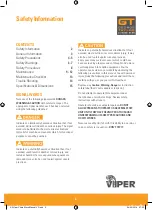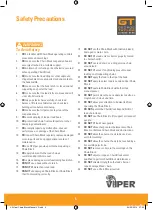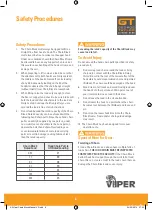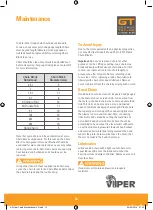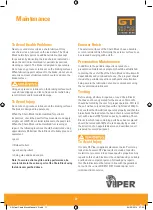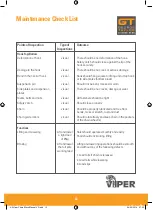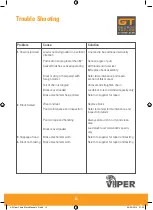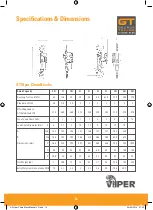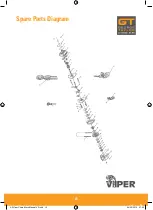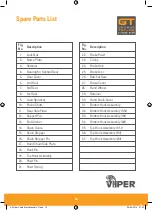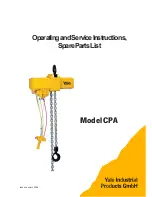
Choose the Right
Chain Block for the Job
Choose a Chain Block with the capacity for the
job. Know the capacities of your loads, then match
them. The application, the size and type of load, the
attachments to be used and the period of use must
also be taken into consideration in selecting the right
Chain Block for the job. Remember the Chain Block was
designed to ease our burden, and carelessness not only
endangers the operator, but in many cases, a valuable
load.
Inspect
All Chain Blocks should be visually inspected before
use, in addition to regular periodic maintenance
inspections. Inspect Chain block for operation warning
notices and legibility. Deficiencies should be noted
and brought to the attention of supervisors. Be sure
defective Chain Blocks are tagged and taken out of
service until repairs are made. Under no circumstances
should you operate a malfunctioning Chain Block.
Check for gouged, twisted, distorted links and foreign
material. Do not operate Chain Blocks with twisted,
kinked or damaged chain links. Load chain should be
properly lubricated. Hooks that are bent, worn or have
openings which are enlarged beyond normal throat
opening should not be used. If latch does not engage
in throat opening of hook, the Chain Block should be
taken out of service. Chains should be checked for
deposits of foreign material, which may be carried into
the Chain Block mechanism. Check brake for evidence
of slippage under load.Each GT Viper Chain Block is
built in accordance with the specifications contained
herein and at time of manufacture was tested to our
interpretation of applicable sections of the European
standard BS EN 13157.
Consult your local GT branch for any usage of GT Viper
Chain Blocks that does not involve working in a direct
line of pull.
As side loading can damage chain or roller guides and
could result in injury and/or property damage. Using
Chain Blocks inverted is outside the design parameters
and should not be done.
Do’s & Do Not’s
Safe Operation of Chain Blocks
The following are Do’s and Do Not’s for safe operation
of overhead Chain Blocks. Taking precedence over any
specific rule listed here, however, is the most important
rule of all, Use Common Sense. A few minutes spent
reading these rules can make an operator aware of
dangerous practices to avoid and precautions to take
for his/her own safety and the safety of others. Frequent
examination and periodic inspections of the equipment
as well as a conscientious observance of safety rules
may save lives as well as time and money.
4
This symbol points out important
safety instructions which if not
followed could endanger the
personal safety and/or property
of yourself and others. Read
and follow all instructions in this
manual and any provided with the
equipment before attempting to
operate your GT Viper Chain Block.
Safety Precautions
HOISTS
A5 Viper Chain Block Manual V2.indd 4
04/03/2014 07:33


